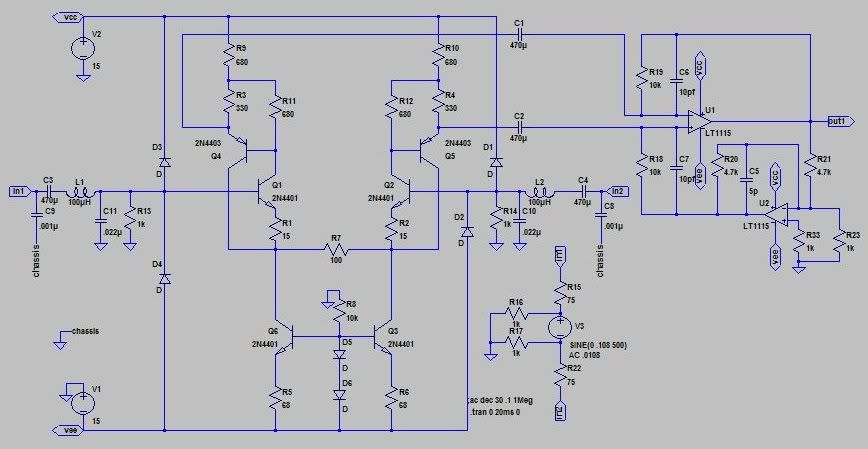This is John Siau, Vice President of Benchmark Media Systems, Inc.
Here is the schematic of the Benchmark Mic Pre, hand-drawn by Allen H. Burdick March 1, 1984. This schematic had been posted at the begining of this thread, but was later deleted. Benchmark did not request the removal of this schematic. Fortunately, I made a copy of it berfore it was deleted. I am reposting it due to the multiple requests on this thread. Benchmark would like the schematic to be available to members of this forum.
All Benchmark Mic Preamplifiers still follow a similar topolgy. We have made a number of improvements over the years. These include better transistors, better opamps, lower impedances, DC servos, improved protection circuits, and improved CMRR trim circuits. Nevertheless, the schematic as it apeared in 1984 is sufficient to build an outstanding Mic Preamp.
Our newer designs have lower EIN, and maintain a low EIN over a wide range of gains. Bandwidth has also been extended to 500 kHz.
[Thanks John! I've added to our "Technical Documents" section - Ethan]
Here is the link:
http://www.groupdiy.com/index.php?action=dlattach;topic=46424.0;attach=10299




